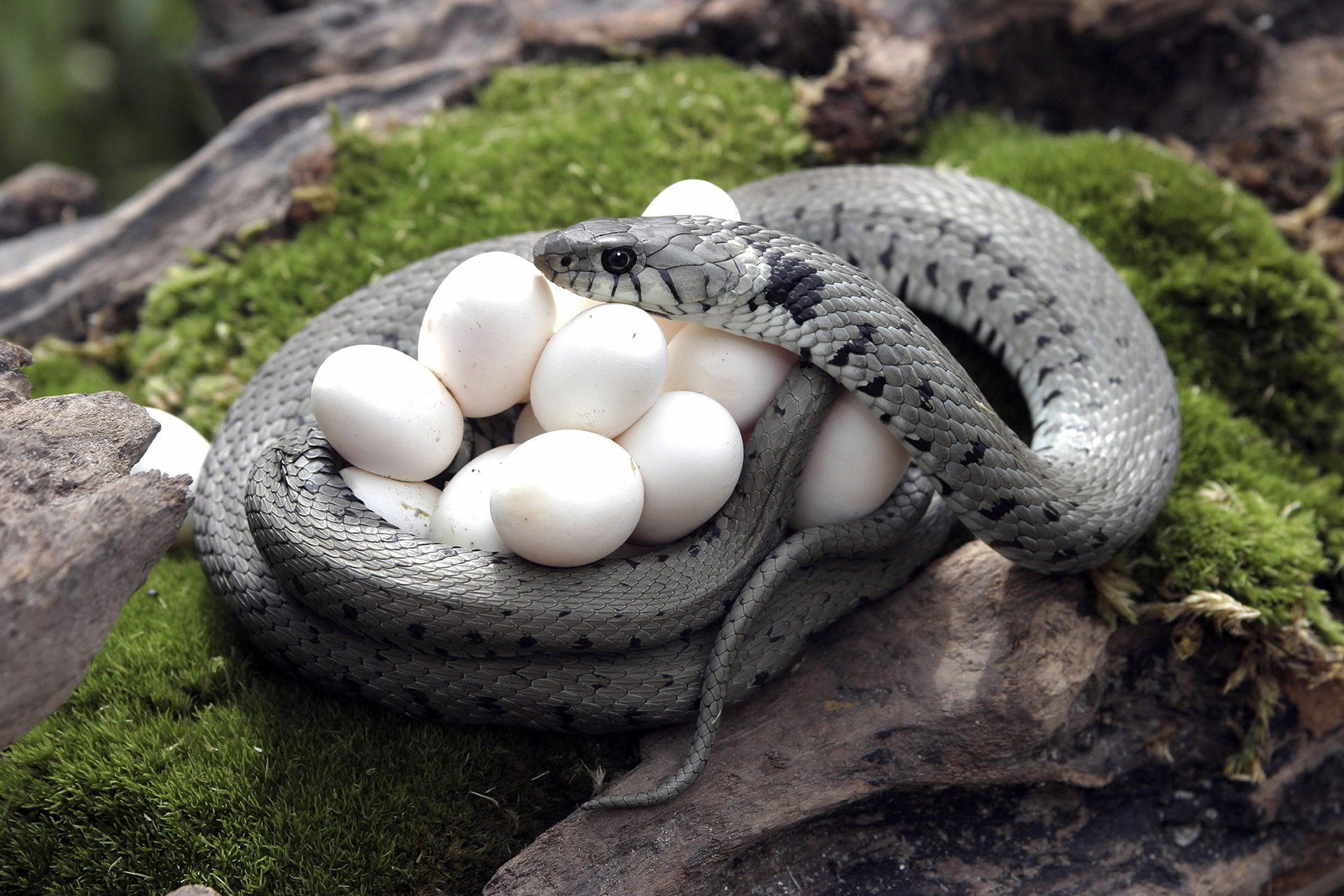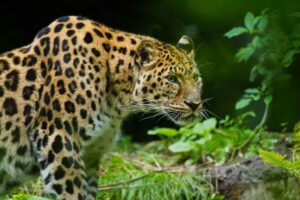
Introduction
The animal kingdom is diverse and fascinating, with various reproductive strategies employed by different species. One of the most common methods of reproduction is oviparity, where animals lay eggs. This article will explore the various types of animals that lay eggs, the characteristics of their eggs, and the ecological significance of oviparous reproduction. We will delve into the different classes of animals that reproduce by laying eggs, including birds, reptiles, amphibians, fish, insects, and even some mammals.
Understanding Oviparity
Oviparity refers to the reproductive strategy where animals lay eggs that develop and hatch outside the mother’s body. This method of reproduction is contrasted with viviparity, where animals give birth to live young. Oviparous animals can be found across various taxa, and their eggs come in a wide range of shapes, sizes, and structures. The eggs typically contain a protective shell or membrane that provides a suitable environment for the developing embryo.
Advantages of Laying Eggs
- Increased Offspring: Laying eggs allows animals to produce a large number of offspring at once, increasing the chances of survival for some of them.
- Parental Investment: Many oviparous species can invest less energy in individual offspring after laying eggs, allowing them to reproduce more frequently.
- Environmental Adaptation: Eggs can be laid in various environments, allowing species to adapt to different habitats and ecological niches.
- Protection: Many species have evolved strategies to protect their eggs from predators, ensuring that at least some of the offspring survive to maturity.
Types of Animals That Lay Eggs
Birds
Birds are perhaps the most well-known oviparous animals. They lay hard-shelled eggs, which provide protection and a stable environment for the developing embryo. The characteristics of bird eggs vary significantly among species, with differences in size, color, and shape.
- Examples: Chickens, ducks, eagles, and ostriches.
Reptiles
Reptiles are another major group of egg-laying animals. Most reptiles lay eggs with leathery shells, which require moisture to prevent desiccation. Some reptiles, such as certain species of snakes, exhibit ovoviviparity, where eggs hatch inside the mother’s body, and live young are born.
- Examples: Turtles, snakes, lizards, and crocodiles.
Amphibians
Amphibians, including frogs and salamanders, also lay eggs. Their eggs are typically laid in water or moist environments and are often surrounded by a gelatinous substance that provides some protection. Amphibian eggs are usually more vulnerable to environmental changes and predation compared to those of reptiles and birds.
- Examples: Frogs, toads, and salamanders.
Fish
Fish are predominantly oviparous, laying eggs in aquatic environments. Fish eggs can vary widely in size and shape, and many species exhibit different spawning behaviors to protect their eggs. Some fish, like sharks, may also give birth to live young.
- Examples: Salmon, trout, and goldfish.
Insects
Insects represent the largest group of oviparous animals. They lay eggs in various environments, and the eggs can be found in a multitude of shapes and sizes. Insect eggs often undergo metamorphosis, where they develop through various life stages before becoming adults.
- Examples: Butterflies, beetles, and ants.
Mammals
While most mammals are viviparous, a small group known as monotremes lays eggs. Monotremes are unique among mammals and include species like the platypus and echidnas. Their eggs are leathery and require incubation.
- Examples: Platypus and echidnas.
Characteristics of Eggs
The eggs laid by different animal groups exhibit distinct characteristics based on their environment and evolutionary adaptations:
| Animal Group | Egg Characteristics | Examples |
|---|---|---|
| Birds | Hard-shelled, varied sizes and colors | Chickens, Eagles, Ostriches |
| Reptiles | Leathery shells, moisture-dependent | Turtles, Snakes, Crocodiles |
| Amphibians | Gelatinous capsules, often laid in water | Frogs, Toads, Salamanders |
| Fish | Soft, often sticky, laid in water | Salmon, Goldfish, Catfish |
| Insects | Various shapes and sizes, laid in diverse environments | Butterflies, Beetles, Ants |
| Mammals | Leathery, incubated by the mother | Platypus, Echidnas |
The Reproductive Strategies of Oviparous Animals
Nesting Behavior
Many oviparous animals exhibit specific nesting behaviors to protect their eggs. For example:
- Birds: Birds build nests in trees, on the ground, or in burrows. The choice of nesting site often depends on the species and environmental factors.
- Reptiles: Turtles dig holes in sandy beaches to lay their eggs, while snakes may hide their eggs in vegetation or underground.
- Amphibians: Frogs often lay their eggs in water, where they can develop into tadpoles.
Parental Care
Parental care varies significantly among oviparous animals. Some species exhibit high levels of parental investment, while others provide little to no care after laying eggs:
- Birds: Many bird species incubate their eggs and care for the young after hatching.
- Reptiles: Most reptiles do not provide care after laying eggs, but some, like crocodiles, will protect their nests.
- Amphibians: Some frogs and toads guard their eggs, while others leave them to develop on their own.
Egg Development
The development of eggs varies across species. Factors such as temperature, humidity, and environmental conditions can significantly influence the incubation period:
- Birds: Most bird eggs take 10 days to several weeks to hatch, depending on the species.
- Reptiles: Turtle eggs typically take several weeks to months to hatch, influenced by temperature.
- Amphibians: Frog eggs usually hatch within a week or two, depending on water temperature and species.
Ecological Significance of Egg-Laying Animals
Oviparous animals play crucial roles in ecosystems:
- Food Source: Eggs serve as a food source for various predators, including birds, mammals, and insects.
- Biodiversity: The reproductive strategies of oviparous animals contribute to the biodiversity of ecosystems, allowing for a variety of species to coexist.
- Ecosystem Health: The presence of oviparous animals can indicate the health of an ecosystem. For example, amphibians are sensitive to environmental changes and can serve as bioindicators.
- Nutrient Cycling: The decomposition of eggs and the eventual emergence of young animals contribute to nutrient cycling within ecosystems.
Conclusion
Understanding the diversity of animals that lay eggs provides valuable insight into the complexity of the animal kingdom and the various reproductive strategies employed by different species. From birds and reptiles to amphibians and insects, oviparous animals contribute significantly to biodiversity and ecosystem health. By recognizing the ecological roles of these animals, we can appreciate the importance of conserving their habitats and ensuring their survival.
Frequently Asked Questions
- What animals lay eggs?
Animals that lay eggs include birds, reptiles, amphibians, fish, insects, and some mammals like monotremes. - What are oviparous animals?
Oviparous animals are those that reproduce by laying eggs, which develop and hatch outside the mother’s body. - Do all animals that lay eggs provide parental care?
No, parental care varies among species. Some animals, like birds, provide care after laying eggs, while others, like most reptiles, do not. - What is the significance of eggs in ecosystems?
Eggs serve as a food source for predators, contribute to biodiversity, indicate ecosystem health, and play a role in nutrient cycling. - How long does it take for eggs to hatch?
The incubation period varies by species. Bird eggs may take days to weeks, while reptile and amphibian eggs can take weeks to months, depending on environmental conditions.
References
“Animal reproduction and eggs.” Wikipedia. https://en.wikipedia.org/wiki/Egg_(biology)


